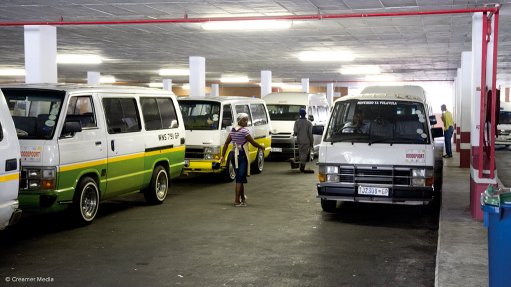
A lack of proper integration with regard to urban public transportation systems has led to inefficiencies and duplications, with some routes and areas being overserved while others suffer from a complete lack of service, Aecom Africa transport operations leader and market sector leader transit executive Chris Britz has said.
Speaking during a Unitrans-hosted Transport Forum webinar on June 6, where challenges and opportunities facing the passenger road-based transportation sector of South Africa were discussed by various experts, he said South Africa’s public transportation was inefficient because of the fragmented nature of day-to-day operations.
“A lot of these services have been planned in isolation of one another, not as integrated networks. The planning was done, to a large extent, by operators to maximise market capture,” he said, noting that a more accurate term for the practice would be “destructive competition” rather than the euphemistic “duplication”.
This destructive pattern has contributed to a regression in public transport efficiencies, with commutes now taking on average about ten minutes longer per passenger than in 2014. Walking times to and from public transportation pick-up and drop-off points has increased from eight minutes to 14 minutes over the same period.
Meanwhile, costs have remained high, rendering public transport an expensive option for most.
“Ïf one looks at the percentage that the average user pays, in 2014, 55% of commuters spent more than 10% of their disposable income. That's now increased to over 60%,” Brtiz said, noting that the international benchmark is that commuters should not be spending more than 10% of their disposable income on transport.
Overall, Britz implied that the picture of South Africa’s public transport sector was a messy one, with funding shortages significantly impacting on more formalised public transport services, as well as rampant inflation, fuel price increases and the weakening of the rand all factoring into a sector that was costing more but delivering less.
Britz added that the inability of passengers to absorb fee increases had a significant impact on the sustainability of public transportation services, resulting in aging fleets and a decrease in the reliability of services.
“If one looks at the subsidised bus services, that is a real challenge as well. It’s not just the operations, but the lack of facilities and also the deterioration of the quality of the facilities that one finds at stops and ranks and so on. That's largely due to insufficient maintenance of facilities, which directly impacts on the user experience,” he said, adding that the much-publicised deterioration of commuter rail over the past few years further exacerbated the problem.
“Transportation planners should probably spend one day a week on their feet, not in cars but on public transport and walking around,” Brtiz said.
He noted that there were significant challenges in integration between land use and transit-oriented development.
“Public transport is not very efficient in serving the public because of the low densities and the way that our neighbourhoods are planned. Gated communities, for example, make it difficult for public transport to serve many areas,” Britz noted.
He said public transport received disproportionately lower funding relative to the role that it played in the economy and society. An increase in funding would be needed to improve the quality and spread of service delivery, reduce incidences of destructive competition and help reduce costs for consumers.
“Only about 0.8% of GDP is being spent, when ideally it should be around 5%,” Britz noted.
He said planning of infrastructure and operations needed to prioritise densification, promote public transport over private transport, improve local access, and lower carbon impact.
“Long-term solutions must be aimed at integrating public transport land use, change spatial layout of cities, shorten travel distances, and reduce the cost of travel,” he said.
Britz noted that integrated strategies needed to be developed and implemented to ensure passenger personal safety and security as well, since this was a significant concern with public transport.
Further, he said that an integrated traveller information and payment system needed to be developed, while the management and maintenance of public transport infrastructure facilities needed to be improved.
Britz further indicated that the minibus taxi industry needed to be mainstreamed through corporatisation and professionalisation, so that it could meaningfully participate in integrated public transportation network planning and become formalised.